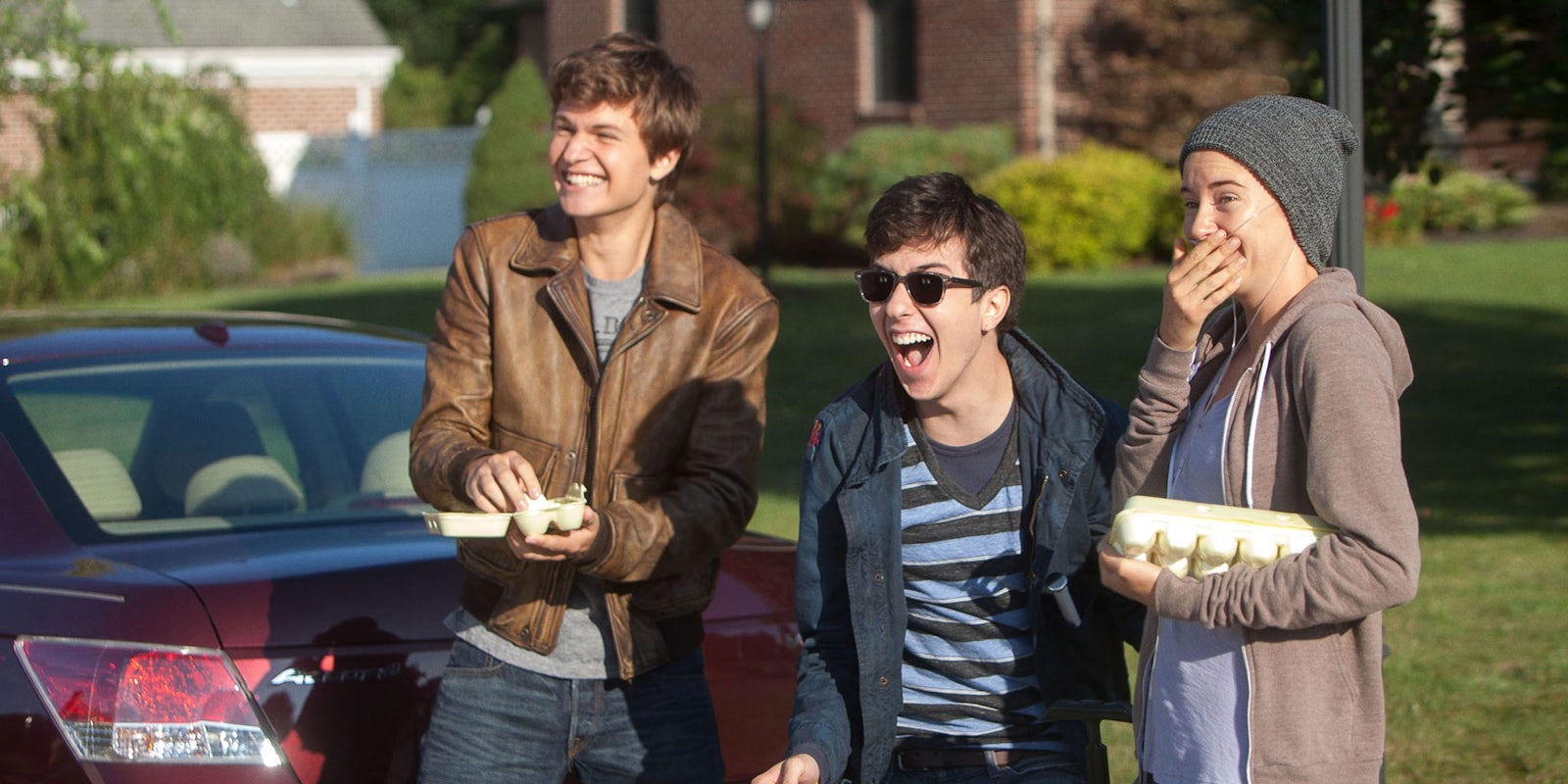The movie Into the Woods takes place in a fantasy world where magic exists and people spontaneously burst into song. Its cast includes witches, giants, and princesses, and in its entire 125-minute runtime, not one line is spoken by a person of color.
This depressing fact is handily illustrated by a YouTube supercut of “every single word spoken (or sung) by a person of color in Into the Woods.” Seven seconds long, it plays a clip of music from the movie before fading to black, birds tweeting awkwardly in the background. Every character in the film is white.
The video is one of several in a series created by Dylan Marron, an actor known for the webseries Whatever This Is and his role as Carlos in the podcast Welcome to Night Vale. Speaking to the Daily Dot, he explained the thought process behind the series.
“I’ve been an avid moviegoer since I was a young kid,” he said, “and it’s hard because you really rarely see reflections of yourself if you are really anything other than a straight white person.
“I would be told that I’ll never play the romantic male lead.
“When you’re younger and you don’t really have the tools to unpack it, you just internalize that and accept it as truth. I think as I got older I started to question it, especially as I became a working actor. I would be told that I’ll never play the romantic male lead and there weren’t many parts out there for my quote-unquote ‘type.’ That’s a really hard thing to hear, and you can only hear it so much before you can no longer accept it as a reasonable answer. What’s so frustrating is it has nothing to do with talent. I’m just being told what work there is out there for me.”
In many cases, Marron picked films that he personally enjoyed. Her and Frances Ha were both critically acclaimed for their originality and depth, yet both fall foul of the “Every single word spoken…” test. Frances Ha’s video clocks in at 30 seconds with four characters who have no name outside their roles: Computer Guy, Security Guard, Theater Manager.
“When I started to cut these movies together it was like an exploration,” he said. “What do these movies look like if you just distill the people of color speaking? The result is kind of shocking. All of the videos so far have been less than a minute, and so many of the characters are nameless. You couldn’t even call them supporting characters, they’re just peripheral characters.”
Between 2007 and 2013, 74 percent of characters in major Hollywood movies were white, compared to only 49 percent of moviegoers. Latinos make up 32 percent of the audience and 4.9 percent of the characters onscreen. To make matters worse, Hollywood filmmakers frequently cast white people as characters of color, such as Emma Stone in Aloha or the main cast in the Last Airbender movie. But while these stats are obviously grim, they don’t have the immediacy of a video like this:
When choosing which movies to sample, Marron selected films that received mainstream attention and have “entered the cultural lexicon.”
With the exception of Noah, which was criticized for focusing exclusively on white characters in a quasi-Biblical setting, none of the films on Marron’s YouTube channel have been at the center of a public conversation about race. Basically, they’re typical. They represent a wide range of genres, from indie drama to broad comedy to big-budget Oscar bait, although Marron says that he finds Hollywood’s race problem “especially troubling in the fantasy genre, which is not rooted in any historical accuracy, nor is it beholden to any kind of reality.”
The 1997 Cinderella movie looms large in his memory, a cult favorite with a diverse cast including Brandy, Whitney Houston, Whoopi Goldberg, and Filipino-American actor Paolo Montalban as the Prince. “I was really young when I saw it, and when I saw it I was like, ‘Wow, everything’s gonna change now.’ And unfortunately it’s just become exceptional, and not the rule.”
Overall, the response to Marron’s videos has been positive: “I think one of my favorite reactions is from people of all races, like, ‘Wow, I never noticed that.'”
“In the series I’m really just exposing this issue,” he added. “I’m not really adding commentary to it. I think that’s what’s so interesting. You get YouTube commenters who just vehemently disagree with you, and the way that I’m editing these videos is… there’s no embellishment and there’s no comment. And to see the anger this incites is interesting.
“People take such offense to being called racists, and they get so defensive. The interesting thing is, I don’t intend to call any one person racist. We have such a difficult time as a society, on a global conversation level, of talking about a system of racism. We’re so intent upon blaming individual people and pinning racism to one person, when it’s a systemic problem. This isn’t a fault of these individual directors, but the whole structure they are part of.”
Photo via The Fault In Our Stars
